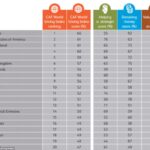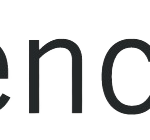Wondering what’s standing between your current corporate giving strategy and your ideal corporate philanthropy? Ever considered that it might be you?
Not you personally, of course, but you – the company.
Here’s the thing:
With most corporate giving strategies, the company partners with a charitable cause. Then the company turns to its employees to create engagement with the chosen charity.
Between the employees and the causes is the company, serving as a middleman. But successful employee engagement occurs when the employees actually have the opportunity to, you know, engage with the charity.
It’s time for you – the company – to get out of your way. Stop serving as an intermediary and put employees in the drivers’ seat with an intuitive, HR technology corporate giving solution.
What Your HR Technology Needs First

Your HR technology needs to integrate seamlessly with your corporate giving technology. A technological solution needs to remove roadblocks, not create them. Without seamless integration, you’re tripping out of the starting gate.
Additionally, your HR technology needs to be intuitive and easy to use. For everyone who will be using it. Administrators and employees both should have no problem navigating the technology and seeing exactly what they need.
What the Employees Can See
What matters to employees with corporate giving technology is a little different than what matters to administrators.
When employees use it, they should see their profile. Within their profile, employees will have indicated their interests. Based on this information, they should be connected with causes likely to resonate with them.
But employees could see more than what causes they support. Why not share with them what their colleagues and co-workers are interested in as well?
When employees are able to see how their colleagues are getting involved, it reinforces giving as a core value of the company culture and community.
This kind of sharing show employees what they have in common with one another. They can see what interests they share and who else cares about the same causes.

After all, if Elizabeth is donating to the local youth ranch, another employee may see that and think, “Oh hey! I see Elizabeth also donates to the local youth ranch – how cool. I’ll message her and see if she wants to volunteer there with me next week.”
Additionally, employees should be able to to quickly see a summary of their own engagement. They should have quick and easy access to their tracked volunteer hours, the amount they given in financial contributions, and importantly – the impact their giving has had.
What the Employers See
Employers and employees are interested in similar information when it comes to corporate philanthropy, just on a different scale.
Where employees can track their own volunteer hours and monetary gifts, employers can see this data for the whole company.
Employers can easily find out how many hours are volunteered, how much money is given and to which charitable organizations. This can provide insight into what employees are interested in and the causes they value.
With all this information, it’s easy to pull statistics that can show your company’s community involvement.

We’re talking real, quantifiable data at your fingertips that can give a snapshot of your company’s corporate philanthropy – with as much or as little detail as you need.
What This Means for Your Corporate Philanthropy
The short answer:
Intuitive corporate giving technology can fuel your employees to give more.
The long answer:
There are at least four distinct ways that corporate giving technology can help increase employee engagement in corporate philanthropy.
First, employees are in the driver’s seat of their own charitable contributions. There is no longer an intermediary determining how they give and to which causes.
Employees have the opportunity to give directly to causes that matter to them. If they are not sure which organizations are doing work in their areas of interests, no problem. When they fill out their profile they will get suggestions that align with their concerns.
Second, it reinforces and builds a community and culture around corporate giving. Employees can see and connect with their co-workers over shared interests.
When employees see where and how other employees give, they are often inspired to give too.
Third, employees can easily track and monitor their own engagement and impact. The impact especially is important. When people are able to see how their time or money has helped a cause that matters to them, it validates that choice to give. It can also encourage them to give again and more often.
Fourth, employers can use information to ensure future corporate giving events are successful. Want to have a company volunteer day? Find out where your employees are already volunteering time? Or is there a place in the local community where employees give financial donations but have not been able to volunteer?
Orchestrating a volunteer day there demonstrates that employers are committed to supporting the causes valued by employees.
Conclusion
When employees are given the tools to connect directly with causes that matter to them, share those causes with their co-workers, and track their own data – they don’t need the company to serve as an intermediary and can take charge of their own engagement in an empowering manner.
What are you waiting for? It’s time to get out of the way and let HR technology fuel your corporate philanthropy!
{{cta(‘a67601ab-319d-467e-8100-a2ba0d006d8f’)}}



































































































































